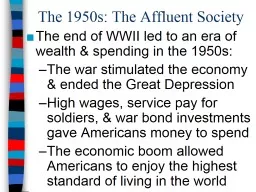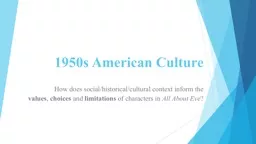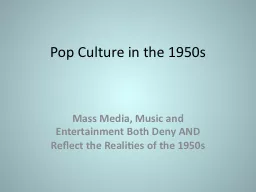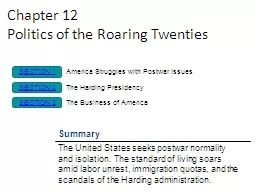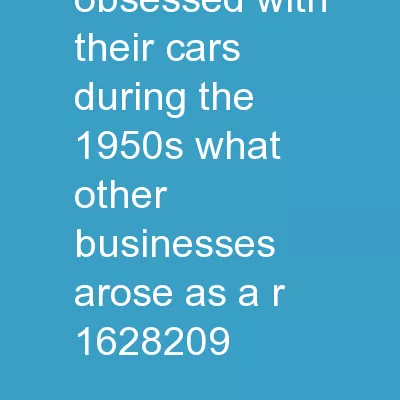PPT-Postwar America Popular Culture of the 1950s
Author : briana-ranney | Published Date : 2018-11-13
The New Mass Media The Rise of Television Popularity During WWII televisions became affordable Television news became an important vehicle for info Athletic events
Presentation Embed Code
Download Presentation
Download Presentation The PPT/PDF document "Postwar America Popular Culture of the 1..." is the property of its rightful owner. Permission is granted to download and print the materials on this website for personal, non-commercial use only, and to display it on your personal computer provided you do not modify the materials and that you retain all copyright notices contained in the materials. By downloading content from our website, you accept the terms of this agreement.
Postwar America Popular Culture of the 1950s: Transcript
Download Rules Of Document
"Postwar America Popular Culture of the 1950s"The content belongs to its owner. You may download and print it for personal use, without modification, and keep all copyright notices. By downloading, you agree to these terms.
Related Documents







